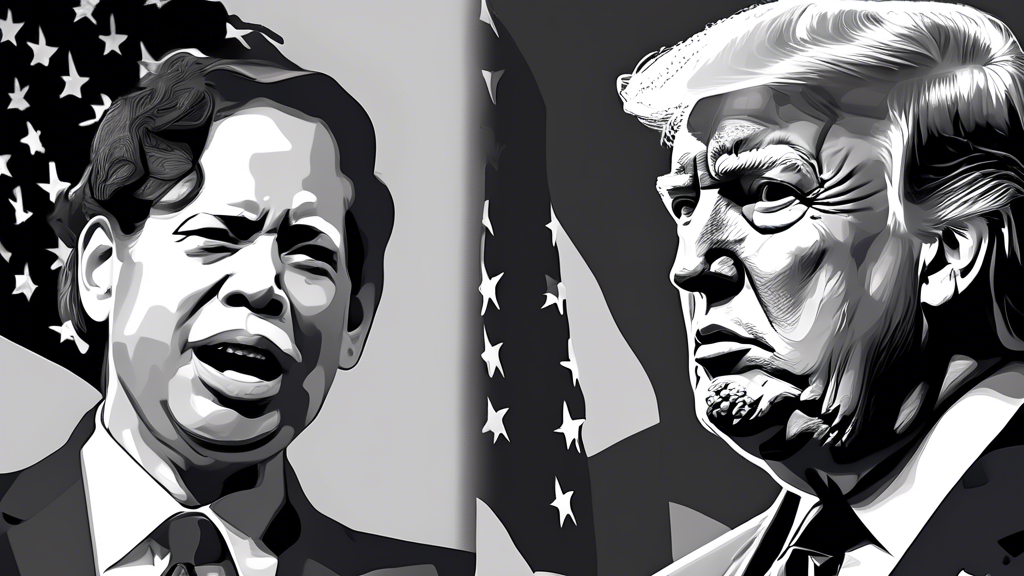
The Neck-and-Neck Battle for the White House
As of October 25, 2024, the U.S. presidential race between incumbent Donald Trump and Vice President Kamala Harris remains fiercely contested. Both candidates are locked in a tight race, with national polls showing them tied at approximately 47% each. This deadlocked competition hints at a potentially nail-biting finish, keeping political analysts and voters on edge. Amidst this competitive atmosphere, both candidates are implementing varied strategies and focusing on crucial issues to sway undecided voters in the final stretch.
Early Voting Trends
Early voting data offers a glimpse into voter preferences, portraying a promising scenario for Kamala Harris. She has garnered an impressive 61% of the early votes, demonstrating stronger early mobilization compared to Trump’s 36%. Despite this advantage, pending voters still represent a critical battleground where Trump shows a 50% to 44% lead over Harris. This disparity between early and undecided voters points to the potential volatility and pivotal nature of Election Day turnout.
Focus on Texas: Ground Zero for Campaign Prowess
The state of Texas has emerged as a focal point of campaign activities for both candidates. Donald Trump is scheduled to amplify his presence in Austin by recording a podcast with Joe Rogan and appearing alongside Texas stalwart Senator Ted Cruz. These engagements are part of Trump’s intensified efforts in pivotal states, seeking to capture the diverse and divided electorate of Texas.
Simultaneously, Kamala Harris plans to hold a significant campaign rally in Houston, underscored by the presence of cultural icons such as Beyoncé and Willie Nelson. The rally is strategically aimed at addressing pressing issues like Texas’s stringent abortion laws, thereby energizing her base and drawing national attention to reproductive rights, an arena where she holds a substantial lead over Trump among likely voters.
Economic and Social Issues: A Divided Trust
The economic platform forms a crucial battleground where Donald Trump holds a more substantial trust margin, garnering support from 50% of likely voters, a stark contrast to Harris’s backing of 37%. This suggests that many voters still associate Trump with robust economic management, even as broader social issues sway other segments.
Conversely, Kamala Harris dominates the conversation on abortion and reproductive rights, where she commands the support of 52% of likely voters compared to Trump’s 31%. This divide illustrates not just the candidates’ differing approaches to core issues but also reflects the electorate’s varied priorities. Harris’s strong stance on these issues seems to resonate profoundly within key demographic groups, enhancing her appeal among women, younger voters, and urban dwellers.
Transforming Campaign Strategies
Both candidates are adapting to the changing media landscape by shifting their focus from traditional local television interviews to more modern platforms with extensive outreach. Popular podcasts are proving to be effective spheres for both Trump and Harris. Harris, for instance, has utilized appearances on podcasts like Call Her Daddy and All the Smoke to connect with about 26% of likely voters, showcasing her agility in leveraging new media to reach a broader audience.
Kamala Harris also capitalizes on high-profile endorsements from well-known figures to create engaging content and emphasize critical issues. This strategic maneuver serves not only to amplify her core messages but also to energize voter turnout by engaging those who may traditionally remain disengaged. Her rally in Houston sets a precedent for using local events to spark national dialogue, particularly concerning abortion laws, projecting an earnest message to both Texas voters and the broader national electorate. In this closely fought race, the ability to resonate on both economic and social fronts could prove decisive in the final electoral outcome.
